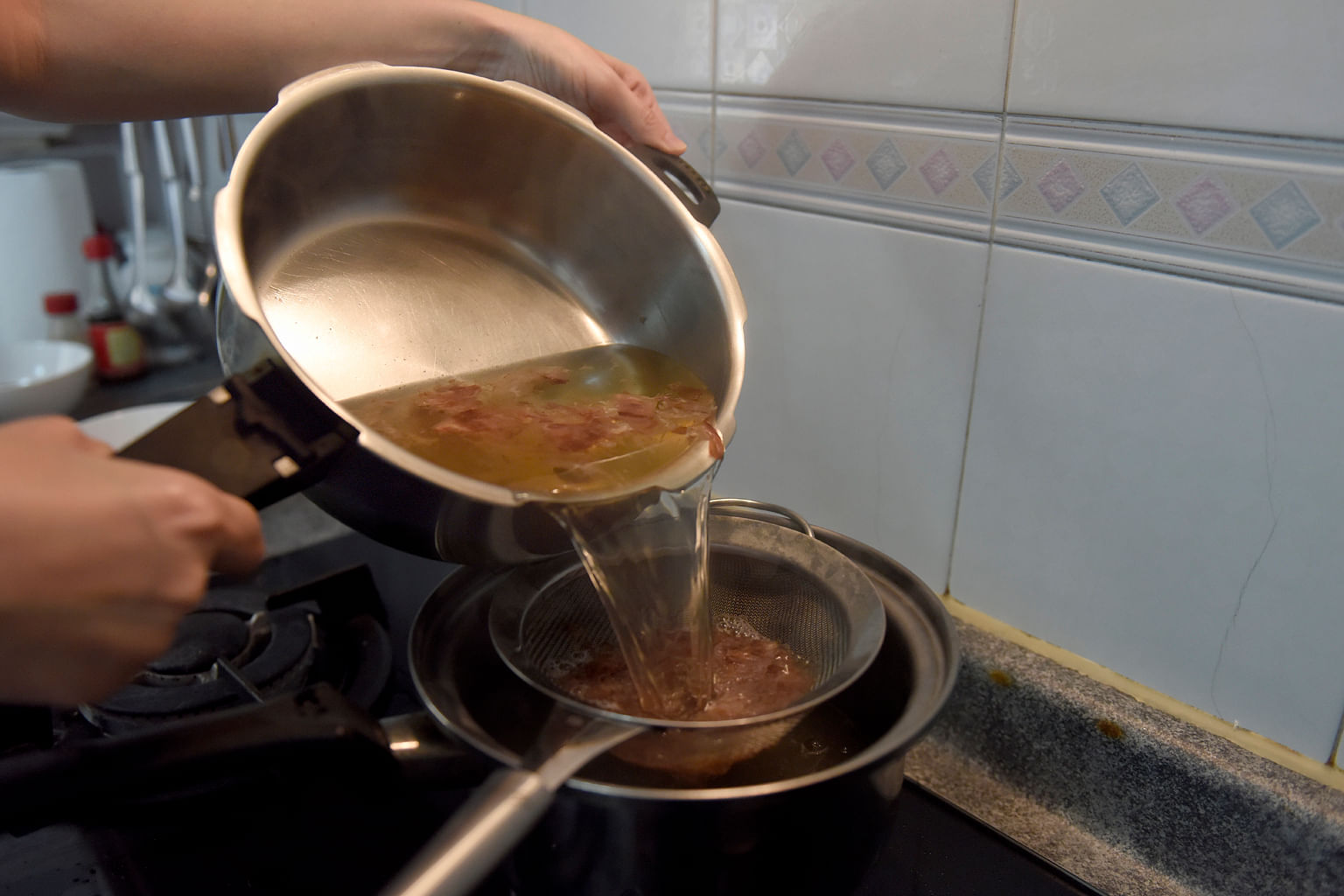Singapore Cooks
Make ozouni soup for a warm, soulful start to the new year
For freelance writer Kyoko Nakayama, the New Year begins with Japanese soup ozouni

For as long as she can remember, freelance writer Kyoko Nakayama has been eating the same dish for breakfast on the first day of every year.
Her New Year's Day ritual starts with cooking ozouni, a Japanese soup that consists of mochi, vegetables and meat. It is part of osechi-ryori (often shortened to osechi), an auspicious assortment of dishes arranged neatly in bento boxes, eaten to celebrate the Japanese New Year, or Shogatsu, which falls on Jan 1.
She learnt to cook ozouni from her mother when she was eight. She continued the family tradition after she moved out of her family home in Kanagawa Prefecture to work as a broadcast journalist in Yamanashi Prefecture when she was 21. She relocated here with her husband and son close to four years ago to take up a job offer in a now-defunct Japanese television station.
The soup originates from samurai families in ancient times and is a symbol of good luck and longevity for the Japanese.
The bubbly 43-year-old says: "It is like how some people feel that celebrating Christmas is not complete without having roast turkey. I would feel that something is missing if I do not start the year with a bowl of ozouni, as it is my soul food and it connects me to fond childhood memories."

Ozouni, which is an amalgamation of the Japanese words for mixture and boiled or braised food, comes in different versions that vary by prefecture and household.
The soup is broadly divided into the eastern Kanto and the western Kansai versions.
She says the Kanto version is made with clear and light dashi that is flavoured with sake or mirin, soya sauce and salt, and typically comes with green vegetables, chicken and grilled mochi.
The Kansai version comes with thick dashi, miso stock and boiled mochi. The stock is also sweeter from being cooked with yam, daikon and carrot.
Though Ms Nakayama grew up eating the Kansai version, as her parents hail from Hyogo, her own version is a fusion of the two.
A chef taught her the Kanto version about 18 years ago, when she hosted a cooking show in Japan and she has made tweaks to the recipe so that her father, who has high blood pressure and diabetes, can have "a healthier alternative".
Besides omitting salt from the recipe, she adds lean chicken and shiitake mushrooms to make the soup more wholesome.
"My father doesn't like the Kansai version of ozouni as it is too sweet. He would chew on savoury grilled mochi that is soaked in green tea and salt," she says. "Having grilled mochi in the ozouni is a must for him."
Besides the soup, she also makes other osechi dishes such as candied anchovies, carrot and daikon salad, braised kombu with dried melon strips and kuromame (sweet black soya beans).
Besides being strongly rooted in Japanese cuisine, Ms Nakayama has been busy experimenting with the "more aromatic and exotic" South-east Asian ingredients after relocating here.
She enjoys making weekly trips to Tekka Centre to explore ingredients such as kaffir lime leaves, ginger flower and jackfruit. Some of her favourite dishes to make are banana flower salad with ginger flower, fish sauce and calamansi juice; green curry with jackfruit, moringa and eggplant; and Thai basil pork rice.
The experimental home cook gets her inspiration from dining in restaurants, most recently at Peranakan restaurant Candlenut in Dempsey Road, where she was impressed with a braised lamb dish topped with moringa tempura.
Ms Nakayama, who writes for the popular Japanese tourist guide book Globe-Trotter and four Japanese lifestyle websites, cooks five times a week for her family. She is married to a 42-year-old senior vice-president in the finance industry, and their two sons are aged 12 and two.
She says with a laugh: "I am amazed by the ingredients here and enjoy cooking new dishes so much that my family has to bear with my kitchen experiments at times."
For more Singapore Cooks recipes, go to http://str.sg/4MbR.
OZOUNI
INGREDIENTS
10g dried konbu (kelp)
1 Tbs sake
250g boneless chicken breast meat, skin removed and cut into 3 by 2cm pieces
80g carrot, cut to 5mm-thick slices
150g spinach
½ tsp salt
4 pieces mochi, from Japanese supermarkets such as Isetan
7g bonito flakes
1 tbs mirin
3 tbs Japanese soya sauce
4 medium-sized prawns, shell on
4 fresh shiitake mushrooms
Yuzu peel or yuzu kosho (yuzu and green chilli seasoning) to garnish
METHOD
1. In a bowl, soak dried kelp in 600ml of water for at least one hour.
2. Combine the sake with the chicken in a mixing bowl. Set aside for at least 15 minutes.
3. In a pot set over medium heat, boil carrot slices in 400ml of water. Cook for five to 10 minutes until they are soft. Remove and set aside. In the same pot, blanch spinach with boiling water mixed with 1/2 tsp of salt, drain and cut spinach into 4cm-long bunches with a pair of scissors. Set aside.
4. Toast the mochi in an oven preheated to 200 deg C for 10 minutes, until they puff up. Set aside.

5. After the kelp has been soaking for at least an hour, pour the kelp and water into a clean pot before adding 600ml of water. Set the pot over medium heat and bring the water to a boil. Turn off heat. Remove kelp with a pair of tongs and discard. Add bonito flakes into the pot and let soak in the hot water for two minutes. Drain bonito flakes from the dashi stock and discard the flakes.
6. Set the pot of dashi over medium heat, add chicken slices, mirin and Japanese soya sauce before stirring the contents.
7. Add prawns and mushrooms to the dashi and let the ingredients boil for five minutes.
8. Turn off the heat. Divide the ingredients among four bowls. Add a piece of toasted mochi to each bowl. Garnish with yuzu peel or yuzu kosho. Serve.
Serves four
Join ST's Telegram channel and get the latest breaking news delivered to you.
A version of this article appeared in the print edition of The Sunday Times on December 25, 2016, with the headline Make ozouni soup for a warm, soulful start to the new year. Subscribe

